Theresa Smith's Blog, page 84
February 3, 2020
Book Review: Riptides by Kirsten Alexander
About the Book:
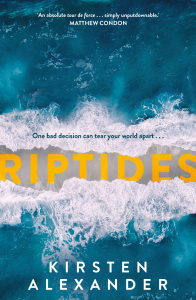
Set in Queensland during a time of tremendous social upheaval, Riptides is a gripping family drama about dreams, choices and consequences, from the author of the acclaimed Half Moon Lake.
One bad decision can tear your world apart…
December 1974. Abby Campbell and her brother Charlie are driving to their father’s farm on a dark country road when they swerve into the path of another car, forcing it into a tree. The pregnant driver is killed instantly.
In the heat of the moment, Abby and Charlie make a fateful decision. They flee, hoping heavy rain will erase the fact they were there. They both have too much to lose.
But they have no idea who they’ve just killed or how many lives will be affected by her death. Soon the truth is like a riptide they can’t escape, as their terrible secret pulls them down deeper by the day.
My Thoughts:
Riptides is a complex and gripping story about the weight of one’s decisions, morality, and family obligation. Set in Brisbane during the mid-1970s, this novel is not just a story about siblings committing a crime; it’s also a snapshot of the state of Queensland, smack bang in the middle of Bjelke-Petersen’s ‘police-state’ reign.
The sense of time and place is so vividly recreated within this novel, not just in terms of the era and setting, but also within the characters themselves: their actions, their motivations, their aspirations, their ethical standards. There was no mistaking the where and when within this novel and I felt truly transported throughout. Anyone above forty who grew up in Brisbane will find plenty of nostalgia within this story.
A crime provides the catalyst for all of the events within this novel. I have to say, Kirsten Alexander continued to surprise me with where she took this story. I am so impressed with the complexity and the manner in which she wove such social and political commentary throughout her narrative, not just in terms of time and place, but to actually drive the plot forward into areas I couldn’t have foreseen. This is first class crime fiction and I highly recommend it. Riptides, alongside her first novel, Half Moon Lake, has firmly established Kirsten Alexander as an author to follow. Her work transcends the genre and pushes the boundaries of morality in a way that makes for thought provoking reading.
‘The trick, I suppose, is to bend and move with as much of it as you can, without losing your own shape. To know that your life is this one night, this group of people, and also more than this. Also the people who aren’t in the room… Also the things you haven’t yet done.’




Thanks is extended to Penguin Random House Australia for providing me with a copy of Riptides for review.
About the Author:
Kirsten Alexander was born in San Francisco, raised in Brisbane, and now lives in Melbourne with her partner and two sons. Half Moon Lake is her first published novel. Her second, Riptides, will be released in February 2020.
[image error]
Riptides
Published by Penguin Random House Australia
Released 4th February 2020
February 2, 2020
Book Review: An Almost Perfect Holiday by Lucy Diamond
About the Book:
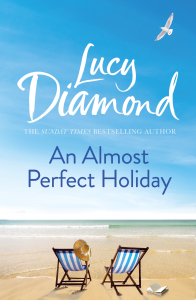
Summer is here, and down in Cornwall Lorna’s holiday cottages are fully booked. The sun loungers are lined up beside the swimming pool, the sky is blue and a new set of arrivals are on their way…
Em’s planned the perfect break with her teenagers plus her new boyfriend, George… but now his difficult six-year-old is coming too. Will their romance survive the realities of parenthood?
Maggie’s hoping a seaside holiday will bring her and her daughter closer together, but when her ex makes a surprise reappearance, it changes everything. Can she trust the man who broke her heart?
Olivia has escaped the domestic grind, only for the past to catch up with her. Maybe the time has come to confess all – if she can find the courage…
Meanwhile, the teenagers are running wild and love is in the air. With friendship, heartache and secrets in the mix, will this holiday turn out to be a scorcher – or simply too hot to handle?
My Thoughts:
I have enjoyed Lucy Diamond’s novels in the past but it’s been a couple of years since I last read one. An Almost Perfect Holiday truly hit all the right notes for me. It’s an absolutely perfect read if you’re looking for a novel that has a little bit of everything: humour, romance, drama, family issues, personal growth, mystery, friendship, grief, and love. There are a lot of characters and there’s a lot going on, but it all worked so well, making for a lively and entertaining read all round.
The four women whose stories each steer the novel were equally as interesting to me. Olivia and Lorna’s story was particularly moving, so much so, I cried twice while reading – it’s been a while since that’s happened! Maggie and Em’s stories were more amusing, and perhaps more relatable in terms of being a parent of teens like they were, but this was a good balance against the gravity of what was going on with Olivia and Lorna.
One thing I want to especially mention is the humour Lucy Diamond infused into this story. I’m finding a lot of late that the humour in these contemporary reads is a little over the top and forced, particularly when it comes to representing children. What Lucy Diamond has done in this story is a brilliant example of how to do it right, how to strike the right balance between genuine humour and realistic representation. I laughed out loud many times and smiled even more. And I never once despaired that a child or teen was over the top. Perfectly done!
I highly recommend An Almost Perfect Holiday. It’s a terrifically entertaining read that is filled with warmth, wit, and true meaning for women who are doing their level best to keep all of those balls juggling through the air.





Thanks is extended to Pan Macmillan Australia for providing me with a copy of An Almost Perfect Holiday for review.
About the Author:
Lucy Diamond grew up in Nottingham and has also lived in Leeds, London, Oxford and Brighton. She now lives in Bath with her husband and three children.
[image error]
An Almost Perfect Holiday
Published by Pan Macmillan Australia
Released 31st December 2019
January 31, 2020
#6degrees of separation: from Fleishman is in Trouble to Chasing Windmills…
It’s the first Saturday of the month so that means it’s #6degrees of separation time! This month’s starting book is Fleishman is in Trouble by Taffy Brodesser-Akner.
You can find the details and rules of the #6degrees meme at booksaremyfavouriteandbest, but in a nutshell, on the first Saturday of every month, everyone has the same starting book and from there, you connect in a variety of ways to other books. Some of the connections made are so impressive, it’s a lot of fun to follow.




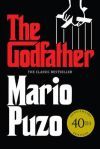


Fleishman is in Trouble is a New York story so I’m going to use that as my first link. The last New York story I read was City of Girls by Elizabeth Gilbert. This can be linked thematically and by setting with Brooklyn by Colm Tóibín, another story (that I really loved) about a young girl starting a new life in New York. It’s an easy jump from here to The Summer of Impossible Things by Rowan Coleman, which is set in Brooklyn. Can I make this whole chain about New York stories? I can give it a red-hot go. Next up is The Godfather by Mario Puzo, and from here I’m jumping to The Goldfinch by Donna Tartt. While The Goldfinch does have multiple settings, it is predominantly a New York story. Everything that happens to Theo began in New York. My last New York story I’m going to link to is Chasing Windmills by Catherine Ryan Hyde. I wonder how different this chain might have been had I actually read the starting book like I intended? I guess we’ll never know!
Next month we’ll begin with Lucy Treloar’s Wolfe Island.
January 30, 2020
The Week That Was…
Our wet season has finally arrived and we have been relishing a whole week of rain!
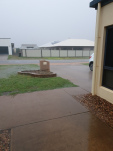
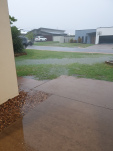
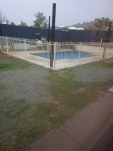
We are of course now isolated by flood, but swings and roundabouts. We desperately needed rain and the break from the relentless heat is magnificent.
~~~
Joke of the week:
[image error]
~~~
Book of the Week:
A tie between these two, as reading one led to the other…
[image error]
[image error]
~~~
What I’ve been watching:
[image error]
An incredibly moving, devastating, and thought-provoking film about a family’s struggle with a son’s drug addiction. I watched this one on Amazon Prime.
~~~
What I finished late last night:
[image error]
~~~
Until next week… 
January 29, 2020
Behind the Pen with Melissa Ashley
I am so delighted to welcome Melissa Ashley to Behind the Pen today, here to talk about her latest gorgeous release, The Bee and the Orange Tree.
[image error]
Describe The Bee and the Orange Tree in five words:
Fairy-tale author rebels against authorities
What was the initial genesis for The Bee and the Orange Tree?
The discovery that there was a golden age of fairy tale writing and publishing in the literary salons of Paris between the years 1690 and 1715. I was in the middle of a creative writing degree, trying to write a novel based on a Grimms’ fairy tale – but hopelessly stuck, and I did some research into the history of fairy tales. I found out about the life of Baroness Marie Catherine d’Aulnoy, who published the first fairy tale in 1690, The Isle of Happiness, between the pages of her first novel. Marie Catherine hosted a literary salon in her bedchamber, attended by Paris’ famous aristocrats, socialites and other writers and authors. She was married at the age of 15 to a man thirty years older than herself – a forced marriage, arranged by her mother – but then had to flee Paris at the age of 19, having given birth to four children, to escape the law. She was not heard of for 20 years, until she burst onto the Parisian publishing scene in 1690 with her first novel, aged 40 years.
Can you share one of the most interesting things you uncovered in your research?
That there was a history of women publishing novels and fairy tales that began in the French literary salons, which started around 1650. Women were believed to possess special social and cultural skills – the arts of charm and conversation – and men were encouraged to attend the salons to get to know the right people, if they wished to advance in literary and political circles. The salons created a community of women who wrote creatively together, participating in literary games and entertainments, and by doing this, managed to subvert some of the draconian restrictions on their lives imposed by the catholic church and Louis XIV’s ancien regime or absolutist rule. They used fairy tales to criticise the status quo, masking their discontent and dissatisfaction with their lives – they could not divorce, could not control their own money, could not choose their husbands, could not work – by disguising them in fantastical settings, thereby eluding the pen of the royal censor. It was quite a modern, sophisticated time, and I think the French salon women’s interests in forming writing communities resonate very much with writers (and readers) today.

Were there any interesting facts you uncovered during the course of your research that didn’t end up in the novel?
There is always so much more material than you can use when you are writing from the historical record. And, ironically, so many gaps you need to deploy imaginative inventiveness to fill, especially the characters’ emotional, interior lives. I can answer the question in a round-about fashion. I had to make interpretations about what Marie Catherine’s children’s lives were like; according to the historical record – though sources do not always agree – they may have grown up in Spain, with their maternal grandmother. However, I chose to have them grow up in and around Paris. Also, Marie Catherine had more children than the three daughters I included in the novel, but I found it expedient to my story to only breathe life into three, so adjusted the facts slightly. I made note of any changes or liberties like this in the author note.
Yes, there is an important fact, connected to the crime that takes place in the novel, something that occurs in Marie Catherine’s life when she is nineteen – though I cannot disclose it here, you will have to read the book – it’s pretty much a whole other story, with many possibilities and implications that I had to exclude. Again, I talk about it in the author note at the end of the book. I tried to put it in – it’s rather terrible – but it would have toppled the story I wanted to tell. You have to juggle just the right material to include in a book so that it will work narratively as a complete story.
I read a line that one of Marie Catherine’s daughters became a fairy tale writer herself, and that was my foundation for the character of Angelina, one of the book’s point of view narrators. But the story I tell about her background is imagined, as there is nothing whatsoever on the historical record about her life. Marie Catherine, along with being a writer, was also a mother, and I am always interested in questions of how women balance or simply ‘do’ – balance is not the right word at all – mothering and working and living and socialising – it is a question central to my own life as a mother, and to the creative lives I like to explore in my books.
From birds to bees, what’s next for Melissa Ashley?
Ha! I am still firmly in the animal world. My next work will be a contemporary novel, set in Queensland, very much in the present – it moves from Brisbane to Port Douglas, Iron Range and Amsterdam, and it’s about a Dad and his daughter – he’s an artist, she’s a troubled teen – and the extinction and environmental crisis this state (and country) are facing at the moment. I’m interested in writing about the butterflies and moths of far north Queensland, and a threatened species of bird and also a threatened marsupial. I can’t give any more details as to how it plays out, however. You will have to wait and see. 
January 28, 2020
Book Review: The Ten Thousand Doors of January by Alix E. Harrow
About the Book:

This breathtakingly beautiful debut is a love letter to the written word and the power of stories to open doors to other worlds.
ACCORDING TO JANUARY SCALLER, THERE’S ONLY ONE WAY TO RUN AWAY FROM YOUR OWN STORY, AND THAT’S TO SNEAK INTO SOMEONE ELSE’S . . .
In a sprawling mansion filled with peculiar treasures, January Scaller is a curiosity herself. As the ward of the wealthy Mr Locke, she feels little different from the artefacts that decorate the halls: carefully maintained, largely ignored and utterly out of place.
But her quiet existence is shattered when she stumbles across a strange book. A book that carries the scent of other worlds and tells a tale of secret doors, of love, adventure and danger. Each page reveals more impossible truths about the world, and January discovers a story increasingly entwined with her own.
My Thoughts:
‘You see, doors are many things: fissures and cracks, ways between, mysteries and borders. But more than anything else, doors are change. When things slip through them, no matter how small or brief, change trails them like porpoises following a ship’s wake.’
Fantasy is not a genre that you see pop up here with any regularity. It’s not that I don’t like it, but more that I need to limit it to small doses. I kind of like watching fantasy movies more than reading fantasy novels. I find it very easy, when I’m reading, to get lost in the worlds and go from knowing what’s going on to not knowing in the space of a few pages. Magical realism is a bit more to my taste, that blend of fantasy with the real world, which is what subgenre I feel The Ten Thousand Doors of January fits into.
‘This was the true violence Mr. Locke had done to me. You don’t really know how fragile and fleeting your own voice is until you watch a rich man take it away as easily as signing a bank loan.’
There’s a lot to like about this novel. It’s cleverly done, and with its ‘story within a story’ aspect, a treat for all those who believe in the power of stories to change lives. However, as much as I liked the concept of the novel, I found it difficult to engage with. It wasn’t until the last 100 pages that I felt invested in the story. Prior to this, it all just seemed like backstory and setting the stage, and at times, I felt quite bogged down by it all, as though I were reading and reading, but not particularly getting anywhere.
‘But you were exactly what we’d been striving so hard to prevent, you see, exactly what we’d sworn ourselves against: a random, foreign element, with the potential to instigate all sorts of trouble and disruption, which ought to be stamped out.’
There were some interesting characters, most particularly January herself, whose personal journey was the one part of the novel that really held me captive. But character wise, I had a few questions. The appearance of a vampire had me cringing (are we not yet done with vampires?) but it also left me confused. If the point of the Society was to keep all those deemed as ‘other’ from passing into the world, why on earth would they let such a creature be part of their group? I wasn’t overly taken with January’s mother either, but I’ve never been keen on characters that are ‘cursed with wanderlust’. It usually translates to being selfish and causing their loved ones harm. But I did find Locke to be an interesting character, just unfortunately under-developed. Instead of all of the waffling on about the academia of doors, I’d have preferred some more on his backstory. But that likely wouldn’t have worked with either of the two first-person narratives.
‘Worlds were never meant to be prisons, locked and suffocating and safe. Worlds were supposed to be great rambling houses with all the windows thrown open and the wind and summer rain rushing through them, with magic passages in their closets and secret treasure chests in their attics. Locke and his Society had spent a century rushing madly around that house, boarding up windows and locking doors.’
It probably seems like I really didn’t gel with this one, and to be truthful, I didn’t, but that doesn’t mean I didn’t like it at all. It was okay, but nowhere near as amazing as the publicity reviews had led me to believe. The historical fiction aspect was a winner in terms of recreating the era, and the concept behind the magical aspect was creatively clever. Fans of magical realism and other worlds style of fantasy should expect to enjoy this one immensely.



Thanks is extended to Hachette Australia for providing me with a copy of The Ten Thousand Doors of January for review.
About the Author:
Alix E. Harrow is an ex-historian with lots of opinions and excessive library fines, currently living in Kentucky with her husband and their semi-feral children. Her short fiction has been nominated for the Hugo, Nebula and Locus awards. The Ten Thousand Doors of January is her debut novel. Find her on Twitter at @AlixEHarrow.
[image error]
The Ten Thousand Doors of January
Published by Orbit
Released September 2019
January 27, 2020
Book Review: The Story of a New Name by Elena Ferrante
Translated by Ann Goldstein
About the Book:
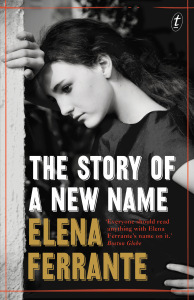
The Story of a New Name is an extraordinary novel about two young women, Lila and Elena, growing up in Naples in the early 1960s. At sixteen Lila marries the shopkeeper Stefano. She is filled with pleasure at her new wealth, and horror at the life she has chosen.
Elena’s own attempts at romance seem to be sabotaged by Lila’s turbulent affairs. As she tries to plot her way out of poverty via academic and literary success, her constant anxiety is that she is just a shadow of the brilliant Lila.
The sequel to My Brilliant Friend, The Story of a New Name continues the enthralling chronicle of a friendship that is obsessive, loving, complicated, hurtful, enduring and constantly startling. It is an exhilarating reading experience.
My Thoughts:
I don’t usually read sequels and only rarely indulge in a whole series. The Story of a New Name is a case in point as to why. Reading immediately after My Brilliant Friend, which was a five-star rave read for me, this one has left me distinctly underwhelmed. We continue on with the pity party that defines Elena and to my disappointment, my adoration of Lila rapidly turned to disdain. The community aspect, along with the societal and political commentary that I loved so much within the first novel, was noticeably absent within this one, but for a few passages here and there. Instead of the literary experience of My Brilliant Friend, The Story of a New Name seemed almost like a soap opera, and to be frank, it was tiresome and repetitive. My predictions about Nino proved spot on and with great disappointment, by about halfway through the novel, I had to resign myself to the conclusion that this great series about friendship was in fact a lie. Elena and Lila were not friends. They were two women who were accidental childhood friends, who should have parted ways years earlier, yet remained stubbornly attached to each other through habit, their interactions fueled by jealousy, narcissism, and misunderstandings. I struggled to identify the elements of friendship within their relationship. There is still, within this novel, Ferrante’s wonderful prose to appreciate, particularly with regard to some of the supporting characters and their stories, and it is for this alone that I have given it three stars. Fortunately, I was buying these books one by one, so I can stop reading now without the guilt of wasted purchases. Perhaps one day I’ll finish this series, but it won’t be for a long time yet.



About the Author:
Elena Ferrante was born in Naples. She is the author of seven novels: The Days of Abandonment, Troubling Love, The Lost Daughter, and the quartet of Neapolitan Novels: My Brilliant Friend, The Story of a New Name, Those Who Leave and Those Who Stay, and The Story of the Lost Child. She is one of Italy’s most acclaimed authors.
[image error]
The Story of a New Name
Published by Text Publishing September 2012
January 26, 2020
Book Review: My Brilliant Friend by Elena Ferrante
Translated by Ann Goldstein
About the Book:
[image error]
My Brilliant Friend is the gripping first volume in Elena Ferrante’s widely acclaimed Neapolitan Novels. This exquisitely written quartet creates an unsentimental portrait of female experience, rivalry and friendship never before seen in literature.
The story of Elena and Lila begins in the 1950s in a poor but vibrant neighbourhood on the outskirts of Naples. They learn to rely on each other and discover that their destinies are bound up in the intensity of their relationship.
Elena Ferrante’s piercingly honest portrait of two girls’ path into womanhood is also the story of a nation and a meditation on the nature of friendship itself.
My Brilliant Friend is a modern masterpiece, the work of one of Italy’s great storytellers.
My Thoughts:
I’m very late to the party on this one, although I have had a copy of this on my eBook shelf for a few years after reading an article on the series, I think, before the fourth book came out. Anyway, better late than never! As is my way of late, I’ve taken to watching before reading – I know! The horror, breaking the golden reading rule. I find though that this avoids that whole ‘it wasn’t as good as the book’ mentality. If it’s good to watch, it’ll be even better to read (usually) and pretty much so far this has been working out for me. So, I watched My Brilliant Friend (over two days) and as far as a TV series goes, that gets five stars. It was exceptional and I loved that it was Italian. I picked up the book straight away and read it in a day (very, very late into the night). I was immediately struck by how the TV series was almost exactly like the book, with a few chronological exceptions, and that hardly ever happens. Ferrante was one of the writers and maybe in Italy you have more say over what happens when your book is adapted than in America, Australia or the UK. Or maybe it’s just a perfect story that needed no extra handling. The emotional intensity of the story translated well onto the screen and the faithfulness to the novel must surely be a bonus to all fans. At least we don’t have to do a book versus the show comparison now. Moving right on.
I wish I could read Italian. The translation is excellent, don’t get me wrong, but when it came to the dialogue, I have this feeling that it would have had a whole other layer of emotional depth in its original Italian. This was evidenced within the show. At times, you could imagine that if people had been shouting those same words in English, the effect would not have been the same. But this is a minor quibble, thank goodness for the translation, allowing the rest of the world outside of Italy to enjoy this wonderful novel.
Elena Ferrante is some writer. This is more than a novel about friendship. The era in which she set the story plays just as much of a role in the telling as the characters. Italy’s turbulent history is evidenced within the very fabric of these characters, the community, and the codes they lived by. My Brilliant Friend is a coming of age novel not just for two girls, but for a nation, who had, in a relatively short amount of time, experienced extreme political turbulence under multiple political regimes, civil war, and two world wars. The characters wear this, they struggle with it, the younger generation want to break free from the fear and ways of the older generation. I absolutely love novels that explore society at such an intimate level like this. And it’s a tough read, at times. The normalised violence is shocking, particularly against children. The oppression is all encompassing, the lack of agency over ones own life, not just women and children, but men too. This is a community run by the Camorra, which is not fictional. It’s an Italian Mafia-type crime syndicate which arose in the region of Campania and its capital Naples and is one of the oldest and largest criminal organizations in Italy, dating back to the 17th century. The stranglehold the Solara family, and the Carracci family before them, had on the community was no exaggeration. The way Ferrante articulated that intergenerational fear was so telling in how a community can remain in a cycle of oppression and forced compliance. This was demonstrated over and over throughout the novel but perhaps the most powerful symbol of it was evidenced in that ending: the inevitable appearance at the wedding of the unwanted guest and those shoes, a forceful statement of exactly where and with whom the power lies. For a sociologist with a long-term interest in Italy’s history, this novel is a gold class case study.
[image error]
Now, let’s talk about that friendship. While I was watching the show, I thought I just didn’t like the actress playing the teenaged Elena, but having now read the book, I realise that the actress was playing her role to perfection. It’s Elena I don’t like. For such a smart young woman, she is almost entirely devoid of emotional intelligence. She misreads every situation and ascribes her own bitter discontent onto all those around her. She is of course the product of her mother’s fears and anger, manifested into a childhood anxiety that grips her and increases in severity throughout her teenage years, again, demonstrating to us how cycles are perpetuated, Elena’s fractured only by the tenacity of a teacher not willing to see another woman wasted. But it’s in Elena’s friendship with Lila that I liked her the least. She was, I felt, disingenuous, too slated with envy and suspicion, unable to love without it always being tinged with hate. I tired of her, particularly as they got older and maturity should have been setting in. Elena was entirely incapable of considering any part of her life separate from Lila, but in a toxic comparative way. Did Ferrante miss the beat with Elena and overplay the whining and apathy? I don’t think so. We all know Lila should have had the educational opportunities that Elena received, but while Elena’s father had a job as a porter at the city hall, Lila’s was a struggling shoe maker. Neither family had much money but the job held by Elena’s father meant that he saw education in action on a daily basis, whereas for Lila’s father, it was unnecessary, an unwanted expense and a possible danger to the order of his household. Much like Elena’s mother’s view, but she was overruled by her husband. Lila, unable to go to school, taught herself. I don’t believe, if the situations were reversed, that Elena would have done that. Elena’s inferiority complex was too great and she’d never have had the will to overcome her anxieties and apply herself under her own steam. She was too much about the external gratification. It was in this jealous way that Elena begrudged Lila her independent learning and intelligence that Elena was at her worst. I hope Elena grows in maturity and emotional complexity over the next three books.
I adored Lila. She was ferocious, her own woman, trying her hardest within the limited confines of her life to go her own way. Marcello’s interest in her was frightening. I do believe he loved her, obsessively though. I don’t believe that she escaped his interest by marrying another man. In a society driven by retribution, she humiliated him too much for that, hence, the ending and that bold statement made by Marcello. Lila’s beauty came not only from her looks but from the fire within her, that dangerous mix that Alfonso pointed out to Elena. I feared for Lila for the entirety of the novel, and if it wasn’t for the fact that the beginning of the story introduces both of the women in their sixties, I felt certain on many occasions that Lila walked a fine line between life and death.
[image error]
No story that rests on the shoulders of a community can exist without the creation of a colourful community. I loved the vast cast of characters within this story and I thought Ferrante distinguished each person enough for her readers to not lose track of who was who. There was a helpful cast list in the front of the book but I didn’t need to refer to it once I’d started. I think out of everyone, my favourite was Maestra Oliviero, a woman who was tirelessly teaching the girls at the elementary level in the hopes that she might rescue, through education, at least one of them and set them free from their plebeian existence. I haven’t mentioned Donato Sarratore and his presence within Melina’s life and later Elena’s. What a snake. I saw the writing on that wall right from the get go. I don’t think his son, Nino, was quite worth the mental and emotional energy Elena expended on him. I feel that he was a young man who closed himself off long ago as a precautionary measure against his father’s repeated misconduct. A complex young man, but devoid of any real emotional capability. Elena alludes to Lila’s panic attacks (not that they were called that back then) and Rino’s bouts of depression that would lead to sleep walking. We see through these conditions, as well as Melina’s mental illness, how people struggled, reliant on empathy and the protection of those around them. With Melina in particular, the community protected her, shielded her, did everything they could to keep her free of an asylum. This community had many characteristics defining it, but not all of them were negative, not by a long shot.
My Brilliant Friend is a five-star read for me, not just for the story and characters, but also for the thought provoking nature of the text. It’s a stimulating and lively novel and I could see at a glance on Goodreads that it’s one of those love it or hate it novels. This reader loved it and I highly recommend the TV series as well.





About the Author:
Elena Ferrante was born in Naples. She is the author of seven novels: The Days of Abandonment, Troubling Love, The Lost Daughter, and the quartet of Neapolitan Novels: My Brilliant Friend, The Story of a New Name, Those Who Leave and Those Who Stay, and The Story of the Lost Child. She is one of Italy’s most acclaimed authors.
My Brilliant Friend trailer:
[image error]
My Brilliant Friend
Published by Text Publishing October 2011
January 23, 2020
The Week That Was…
First week of the year back at work! And we have at long last had some rain. Not a lot, but enough to dampen the dust and fill the air with its scent.
[image error]
~~~
What I’ve been watching:
[image error]
Yes! At long last!! 
And, another one that I had been meaning to catch at the cinema but missed:
[image error]
Devastating, yet brilliant. I watched this with my son and it had great impact on both of us.
~~~
Joke of the week:
[image error]
~~~
Book of the Week:
[image error]
~~~
Something beautiful:
[image error]
~~~
What I’m reading right now:
[image error]
~~~
Until next week… 
January 22, 2020
I Should Have Read That Book Tag
I’m on the lookout for fun memes, not the recurring type, just the one off ones. I saw this one over at The Chocolate Lady’s Book Review Blog and thought it fit the bill nicely. Originally created over at BooksNest.co.uk
I should have read that book…
A book that a certain friend is always telling you to read:
The Chemist by Stephanie Meyer
[image error]
A book that’s been on your TBR forever and yet you still haven’t picked it up:
Dirt Music by Tim Winton
[image error]
A book in a series you’ve started, but haven’t gotten around to finishing yet:
Those Who Leave and Those Who Stay by Elena Ferrante – Book 3 in the Neopolitan series
[image error]
A classic you’ve always liked the sound of, but never actually read:
The Pea Pickers by Eva Langley
[image error]
A popular book that it seems everyone but you has read:
Life After Life by Kate Atkinson
[image error]
A book that inspired a film/TV adaptation that you really love, but you just haven’t read it yet:
Beautiful Creatures by Kami Garcia and Margaret Stohl
[image error]
A book you see all over Instagram but haven’t picked up yet:
The Night Circus by Erin Morgenstern
[image error]
If you join in, remember to tag the creator (BooksNest.co.uk) and me using this post so that I can see what you came up with.
~~~ Enjoy! 




